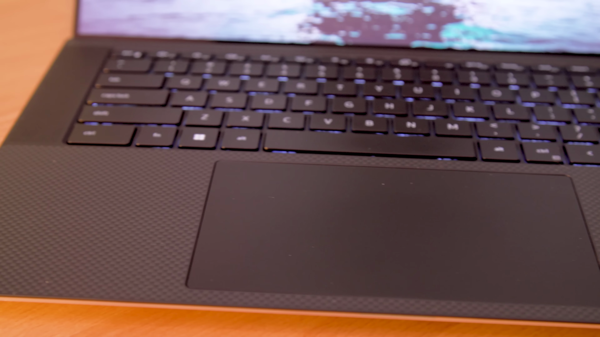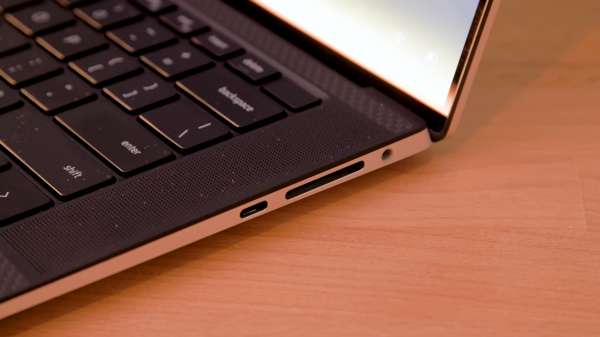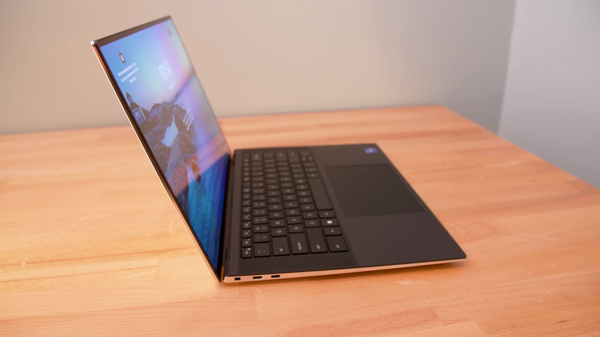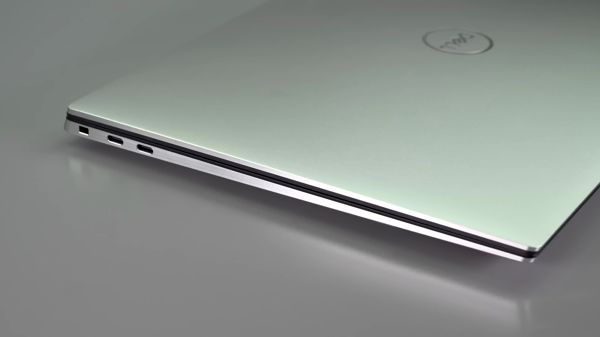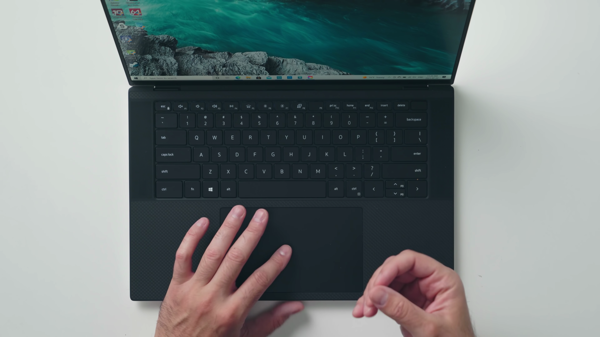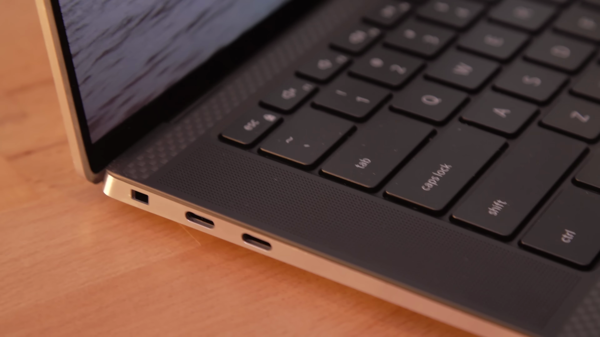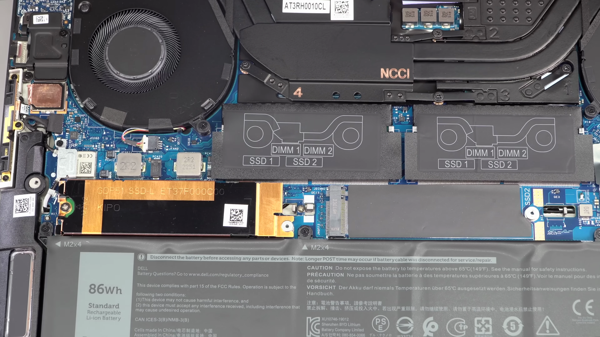Note: As an Amazon Associate I earn from qualifying purchases.
Coding / working on a Dell XPS 15 (2023)
Introduction
One of my colleagues recently upgraded to the Dell XPS 15 (2023) and I wanted to share some insights from my time using this laptop. As a developer, the tools I use are crucial to my productivity and the XPS 15 has a reputation that caught my attention. From design to performance, from thermal management to connectivity, I’m covering all the bases to see if this machine lives up to its hype and suits the demands of my day-to-day coding and multitasking needs. Here’s what I’ve found after putting it through its paces.
Prices
Check prices of the DELL XPS 15 on:
Photos
Click on photos to enlarge them:
Design and Build Quality: Form Meets Function
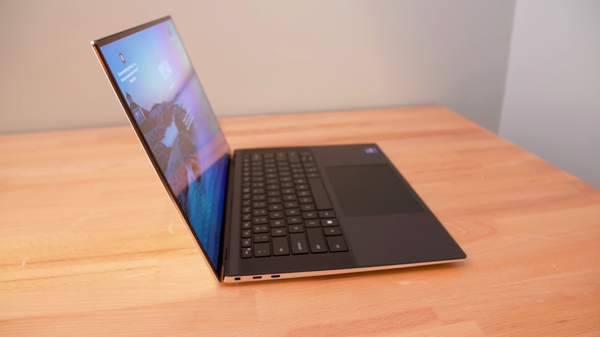
As I reflect on my experience with the Dell XPS 15 (2023), I’m struck by the meticulous attention to detail in its design and the premium feel of its build. It honestly feels like Dell put a lot of effort into creating a high-quality finish that would match its intended audience of professionals and creatives. The aluminum and carbon fiber construction not only exudes a sense of durability but also contributes to the overall lightweight profile, making it a convenient travel companion for my developer lifestyle.
Here’s my breakdown of the design elements:
Aluminum Body: This gives the XPS 15 a sleek, modern look that’s sure to turn heads in any coffee shop or office.
Carbon Fiber Palm Rest: It’s soft to touch and comfortable during long coding sessions.
InfinityEdge Display: The virtually borderless screen makes my work feel immersive, especially when debugging code or streaming video.
Keyboard with Integrated Power Button: A controversial choice, but one I’ve found to not impede functionality.
However, it’s not all roses. The 720p webcam serves up a less-than-ideal image quality for video calls—a letdown for remote meetings. Also, I’m puzzled by the choice to stick with Wi-Fi 6 over Wi-Fi 6E; it seems a missed opportunity for a laptop that’s otherwise so future-focused.
On the upside, the OLED display option is a marvel, with vibrant colors that make visuals pop—important for front-end development and media consumption. And though I haven’t had any major issues with connectivity, I’m glad for the inclusion of Thunderbolt 4 ports for easy expansion and fast data transfer.
The power button, which doubles as a fingerprint reader, is neatly integrated into the keyboard. Despite my initial skepticism, it proved to be quite intuitive and doesn’t accidentally trigger—a relief during intense coding work.
In terms of sheer aesthetics and usability, Dell strikes a fantastic balance with the XPS 15 (2023). However, when shelling out a considerable amount for a premium device, one would expect cutting-edge components through and through. Dell seems to take a conservative approach here, opting to maintain an existing, tested design rather than overhauling every component annually.
While it may not be a dealbreaker, it’s something to ponder if you’re considering this machine as your daily driver. After all, when investing in a high-end laptop, it’s perfectly reasonable to expect the very best—not just in performance but in every aspect of the experience.
Performance and Productivity: Multitasking at its Finest

As someone who’s always jumping between coding environments, web browsers, and creative software, I’ve put my Dell XPS 15 (2023) through the paces. Here’s how it stacks up:
Raw Performance: The Intel Core i7-13700H paired with the Nvidia GeForce RTX 4070 makes for a beastly combo. The ease of compiling code, rendering video, and crunching datasets has been impressive. The new 13th-gen CPUs offer a noticeable bump from the last generation, even if just for the more efficient threading.
Multitasking: With up to 64GB DDR5, swapping between heavyweight applications is seamless. I can have Visual Studio Code open alongside Adobe Premiere Pro, and there’s no lag or stuttering.
Reliability: Despite the robust performance, there have been some concerns. The infamous 720p webcam is a letdown for a premium laptop. I mean, in this age of remote work and constant video calls, it’s almost a deal-breaker. Then there’s the WiFi 6 – not 6E or 7. It’s solid but not cutting-edge, and I’d expect the latest for the price tag.
Here’s a quick rundown:
Pros:
Speedy processors for heavy workloads
Sufficient RAM for smooth multitasking
Beautiful OLED screen that’s a treat for the eyes
Cons:
720p webcam feels outdated
WiFi 6 lacks future-proofing
The price point can be a barrier for some
Despite the drawbacks, the Dell XPS 15 (2023) remains a high-performance machine that’s been mostly reliable for my development and productivity needs. It’s not perfect, but when it comes to handling a multitude of tasks without breaking a sweat – this laptop delivers.
The biggest setback, honestly, is the webcam quality. With so much remote work and collaboration happening digitally, it’s a shame that such an otherwise excellently specced device skimps on this. As for network connectivity, we’re moving into an era where Wi-Fi 6E and even Wi-Fi 7 are becoming more relevant, and being stuck one generation behind doesn’t feel right for such a premium machine.
In all fairness, the lack of Wi-Fi 7 isn’t a massive issue for my current needs, but it does pose questions about longevity and resale value. And while the price point can be a tough pill to swallow, if you’re looking for a workhorse that marries design and performance, the XPS 15 (2023) remains a solid contender.
For a developer who’s also a casual gamer, the XPS strikes a nice balance. Yes, it could do with better thermal management if you’re pushing it to the limits, and Dell should certainly consider more aggressive cooling solutions, but for my usual coding-heavy scenario complemented by some light photo editing, it’s more than adequate.
I haven’t encountered any deal-breaking bugs or hardware issues yet, which is promising, and while my trusty MacBook was good, there’s just something about the XPS that keeps me coming back. I’ll keep an eye on software updates and how they might improve performance or resolve any minor glitches. If you can look past some of its undeniably annoying shortcomings, you’ve got yourself a powerhouse that can eat up tasks for breakfast.
Thermal Management: Keeping Cool Under Pressure

In my experience with the Dell XPS 15 (2023), managing the laptop’s temperature has been a journey of understanding the hardware and tweaking settings. It’s known that with powerful laptops, especially ones as slim as the XPS, keeping them cool under intense workloads like gaming or video editing can be a challenge. Here are my main takeaways:
The XPS 15’s fans can seem to underperform when relying on default settings. Under heavy use, I’ve had to explore alternatives to keep the thermals in check.
An ingenious app found on GitHub, DellFanManagement, overrides the BIOS fan control, allowing for a manual adjustment to max speed, which significantly dropped my core temperatures.
Cooling pads do make a difference, offering additional heat dissipation, complementing the laptop’s internal cooling system.
While the XPS line could be seen as having a cooling dilemma, the issue also lies with the fan control and response to heat production. After tweaking with third-party software, my XPS 15 runs cooler, even when I’ve ramped up the performance.
Though this is a solution for some, it does come with downsides:
Noise levels increase with the fans running at full tilt.
You’ll have to be comfortable making registry changes and using third-party software. Not every user is keen on this level of customization.
Battery life may take a hit if running such configurations constantly without being plugged in.
It’s kind of a bummer that we have to rely on tweaks to get the most out of what is otherwise a premium laptop. On the bright side, though, it’s still a beast of a machine when you get the thermals under control. If you can live with a louder fan noise and a bit of do-it-yourself attitude with third-party apps, the XPS 15 (2023) still rocks as a top-notch device for developers like myself.
I’m hopeful that future Dell designs will integrate more aggressive cooling systems or smarter thermal management software—keeping the sleek design but being able to dissipate heat more effectively. For now, the balance between high performance and maintaining cool temps is a careful dance, and I’m fortunately cutting in with a bit of DIY action.
Connectivity and Future-Proofing: Ports and Possibilities

As a developer who’s spent a considerable amount of time with various laptops over the years, I personally consider connectivity and future-proofing to be non-negotiable in any high-performance machine. The Dell XPS 15 (2023) checks quite a few boxes in this department, but it also skips a couple that you think would be standard by now.
First, let’s go over the positives:
Thunderbolt 4: Not one but two of these ports are present here. This means ultra-fast data transfer speeds and the ability to connect to multiple high-resolution monitors, which is a huge win for productivity.
USB 3.2 Gen 2 Type-C: The inclusion of this versatile port provides additional connectivity options without monopolizing the Thunderbolt ports, ensuring I can have my essential peripherals connected without juggling cables.
SD Card Reader: It might seem like a small thing, but as someone who dabbles in photography, the convenience of a built-in SD card reader can’t be overstated.
Headphone Jack: A simple yet critical feature that’s been disappearing from too many devices lately.
However, I’ve encountered a few drawbacks:
Wi-Fi 6: Good but not great. In 2023, not having Wi-Fi 6E support, let alone Wi-Fi 7, feels like a missed opportunity for a premium laptop aiming at future-proofing.
720p Webcam: Sure, we’ve got ultra-narrow bezels for an immersive display, but at the cost of a subpar webcam - a trade-off that feels outdated, especially considering remote work is now the norm for many developers like me.
While you could argue that an eternal focus on the future means never being satisfied with the present, one can’t help but wish Dell had gone the extra mile. It’s a balancing act — maintaining the XPS 15’s sleek design while integrating the latest tech. I’m reminded of a GitHub project I stumbled upon (see, this is why we need those Thunderbolt ports!) that solves thermal management issues by overriding the fans’ default behavior. It’s this sort of innovative, user-driven solution that gives me hope for future iterations of hardware and enthusiast communities.
In conclusion, the Dell XPS 15 definitely brings a lot to the table. It sustains my current needs, even exceeds them with the available port options. That being said, I’m left with a nagging sense of what could’ve been — better wireless tech, a sharper webcam, and generally more in line with where connectivity standards are headed. But as it stands, the system holds its own quite well, and it’ll remain a mainstay in my developer toolkit for a good while yet.
